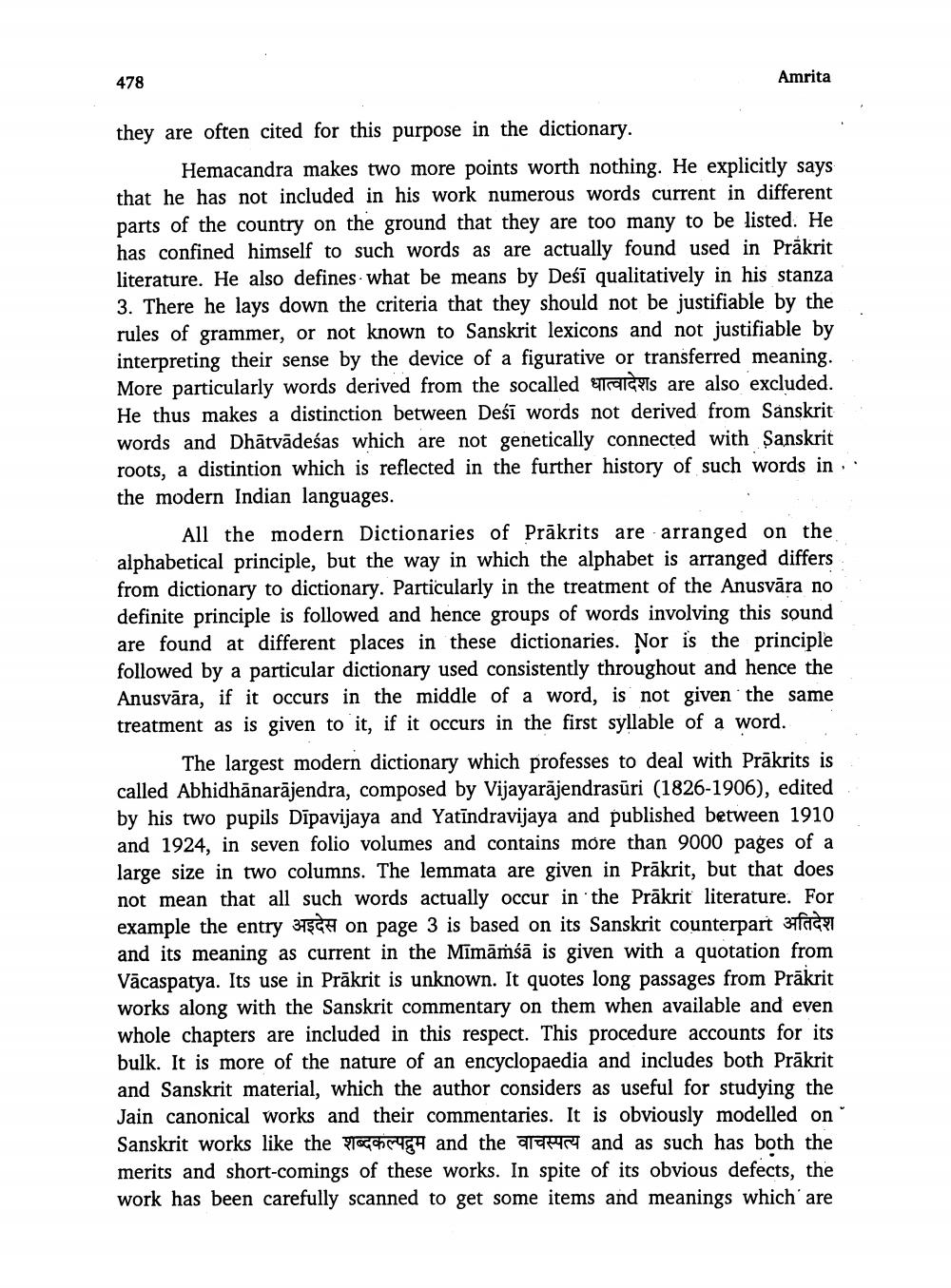________________
478
Amrita
they are often cited for this purpose in the dictionary.
Hemacandra makes two more points worth nothing. He explicitly says that he has not included in his work numerous words current in different parts of the country on the ground that they are too many to be listed. He has confined himself to such words as are actually found used in Präkrit literature. He also defines what be means by Deśī qualitatively in his stanza 3. There he lays down the criteria that they should not be justifiable by the rules of grammer, or not known to Sanskrit lexicons and not justifiable by interpreting their sense by the device of a figurative or transferred meaning. More particularly words derived from the socalled traices are also excluded. He thus makes a distinction between Deśī words not derived from Sanskrit words and Dhātvādeśas which are not genetically connected with Sanskrit roots, a distintion which is reflected in the further history of such words in .. the modern Indian languages.
All the modern Dictionaries of Prākrits are arranged on the alphabetical principle, but the way in which the alphabet is arranged differs from dictionary to dictionary. Particularly in the treatment of the Anusvāra no definite principle is followed and hence groups of words involving this sound are found at different places in these dictionaries. Nor is the principle followed by a particular dictionary used consistently throughout and hence the Anusvāra, if it occurs in the middle of a word, is not given the same treatment as is given to it, if it occurs in the first syllable of a word.
The largest modern dictionary which professes to deal with Prākrits is called Abhidhānarājendra, composed by Vijayarājendrasuri (1826-1906), edited by his two pupils Dīpavijaya and Yatīndravijaya and published between 1910 and 1924, in seven folio volumes and contains more than 9000 pages of a large size in two columns. The lemmata are given in Prākrit, but that does not mean that all such words actually occur in the Prākrit literature. For example the entry 345ca on page 3 is based on its Sanskrit counterpart 3facil and its meaning as current in the Mimāṁśā is given with a quotation from Vācaspatya. Its use in Prākrit is unknown. It quotes long passages from Prākrit works along with the Sanskrit commentary on them when available and even whole chapters are included in this respect. This procedure accounts for its bulk. It is more of the nature of an encyclopaedia and includes both Prākrit and Sanskrit material, which the author considers as useful for studying the Jain canonical works and their commentaries. It is obviously modelled on Sanskrit works like the 16Gh645h and the anger and as such has both the merits and short-comings of these works. In spite of its obvious defects, the work has been carefully scanned to get some items and meanings which are




